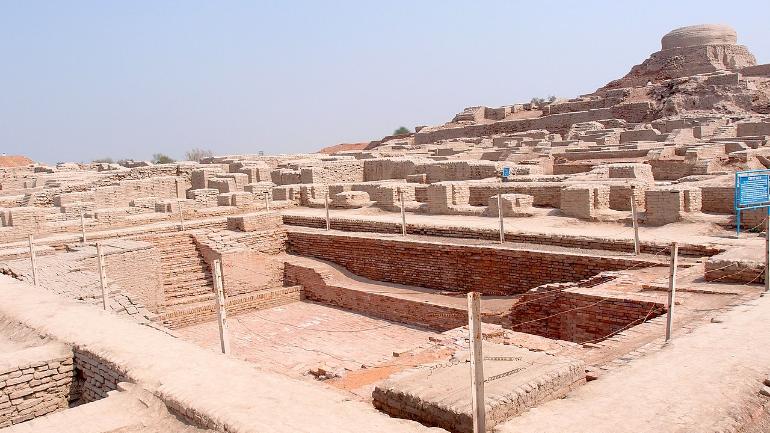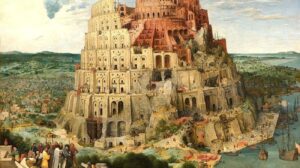- The Indus Valley Civilization, also known as Harappan Civilization, was a civilization that existed during the Bronze Age, lasting for approximately two-thousand years from 3300 BC to 1300 BC. It was located in the area which today corresponds to northern India and Pakistan, near the fertile lands crossed by the Indus and Ghaggar-Hakra rivers.
- Signs of farming and herding in the Indus Valley date back to about 4000 BC, and the first urban settlements can be traced to approximately 3200 BC – from this period onwards, many more settlements and moderately sized towns and cities were established.
- The cities of Harappa and Mohenjo-daro were a prime example of this development, flourishing for a period of almost a thousand and seven-hundred years respectively. This extensive period of flourishing is referred to as the “Mature Harappan” period. These cities, as well as the cities of Dholavira, Ganeriwala and Rakhighari, were great examples of the Indus Valley Civilization’s highly developed urban planning skills – with straight roads, elaborate underground drainage systems, monumental architecture and the use of standardized weights and measures.
- Harappa was located near what used to be the course of the Ravi River, which has now moved slightly north. It is believed that the city was home to about twenty-three thousand inhabitants at its peak, mostly living in clay-brick homes, over a total area of three-hundred-seventy acres, or about one and a half kilometres squared – making it a modestly-sized settlement.
- Mohenjo-Daro was not too dissimilar from Harappa, although slightly larger, occupying an area of 2.7 kilometres squared. Built in 2600 BC, it was one of the largest cities of the Indus Valley Civilization, as well as probably the most advanced with respect to technology, civil engineering and urban planning.
- The writing system of the Indus Valley Civilization remains an unsolved mystery to the present day. Hundreds of symbols have been found on tablets, pots and signboards, symbols which are widely believed to have represented some sort of alphabet yet to be deciphered. However, some historians believe that these symbols did not encode a particular language, rather that they were non-linguistic systems that represented concepts such as gods, families and religion.
- The decline of the Indus Valley Civilization is thought to have commenced around 1800 BC, although the precise reasons for this downturn are not quite clear. A theory postulates that migration from Indo-Aryan peoples from Central Asia contributed to their ultimate downfall; another that the dying up of the Saraswati River forced people to move; and another that there was a great flood in the Indus Valley. Unfortunately, there is no consensus among historians in this regard.
- What we do know is that during this period of decline, many of the features which distinguished the Harappans, such as writing, the use of standardised measures and trade with populations in the East began to disappear. Many of their great urban settlements were gradually abandoned.
- At around 1500 BC, the Indus Valley Civilization finally came to an end. The areas they lived in were subsequently occupied by the Aryans, who crossed the Hindu Kush mountains and made way to modern day Pakistan, something which gives at least some credence to the theory that migration from Central Asia contributed to their ultimate downfall.
References:
- https://www.researchgate.net/publication/264383453_Indus_Valley_Civilization_Table_1_The_Chronology_of_Indus_Valley_Civilization
- https://en.wikipedia.org/wiki/Mohenjo-daro
- https://www.ancient.eu/Indus_Valley_Civilization/
- https://en.wikipedia.org/wiki/Harappa#History
- https://www.khanacademy.org/humanities/ap-world-history/ap-world-history-beginnings/ap-ancient-india/a/indus-river-valley-lesson-summary













Add Comment